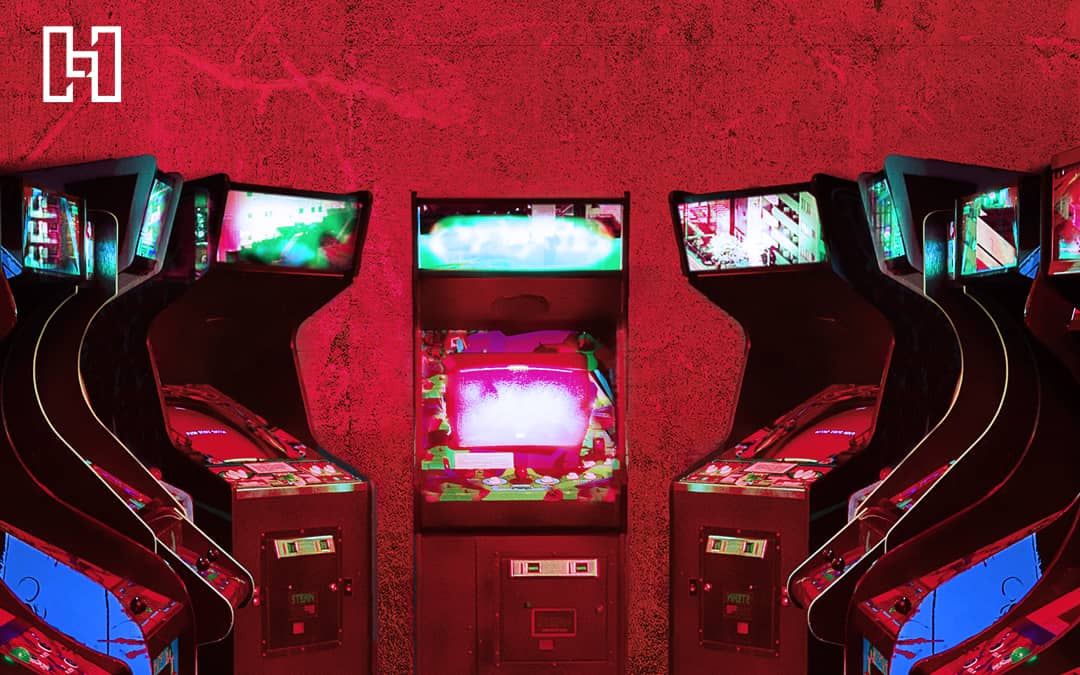Did you know gamification is projected to be a $95.5 billion industry by 2030? If your business hasn’t gotten into the gamification marketing space yet, now might be the time. Learn more about what gamification is and how you can use it for your digital marketing strategy below.

What Is Gamification?
Gamification is a marketing tactic that uses game design principles for digital content and advertisements. There are many different types of gamification, from customer reward programs to minigames. Some common gamification examples include:
- Points & Badges: Achievements awarded when players score in-game, including downloadable graphics they can share on social media, leaderboard positions, and digital currency they can use as credit for real-world purchases.
- Surveys & Quizzes: Templated, response-driven content that prompts users to give feedback and personal data in exchange for incentives like personalized promotions, discounts, or deals.
- Minigames: Short, simple games that can be completed within one sitting, including platformers, RPGS, and puzzle games
- Chance games: One-off games with random selection of established results, such as spin-to-win wheels and digital lottery cards
How Can Gamification Be Used in Digital Marketing?
Gamification can be used as part of a digital marketing strategy to increase brand awareness, improve social sharing, advertise new products, and much more.
Collect User Data
With gamified content, you can incentivize users to offer up personal information that makes advertising easier for your business. Polls, quizzes, and surveys are all effective ways to gamify customer data collection, especially if participants have the opportunity to earn a reward—like an in-app badge or even a discount on a particular product or service.
Boost Online Engagement
Gamified content requires active user participation, which makes it an effective tool for boosting user engagement in digital spaces. In fact, customer engagement increased by 30% when brands used interactive elements in their web portals. Another way gamification can incentivize user interaction is with limited-time content that prompts customers to act quickly.
Conduct Market Research
Tracking user behavior through gamification provides key metrics that can be implemented into your marketing strategy and even help gauge customer preferences regarding products and services. Take IHOP’s marketing strategy to promote burgers on their breakfast-heavy menu. The restaurant chain surveyed customers about what made a great burger, then went viral after jokingly changing its name to “International House of Burgers” to promote the fact that they had burgers on their menu. The results? IHOP quadrupled its burger sales that quarter. The playful marketing campaign paired with gamified customer feedback helped IHOP reach its goals.
Advertise a New Product
View this post on Instagram
The novelty of gamification makes it a great option for brands trying to generate hype around a product. The KFC Shrimp Attack mobile game is an excellent example of this. KFC franchises in Japan released a re-skin of Fruit Ninja that allowed users to earn points by slicing shrimp while evading drumsticks. Depending on how many points the user scored, they could earn real-life discounts for the Ebi Puri (fried shrimp) meal. Participating locations sold out of Ebi Puri products just halfway through the campaign. By marketing this new product through a playful, engaging game, KFC was able to increase awareness about it while converting customers.
Build Brand Awareness
Just as it can help advertise a new product, gamification marketing can also help businesses push better brand awareness. For instance, world-renowned company M&M’s created an “eye spy” game with the goal of reminding people about their not-so-new pretzel line. Among the overwhelmingly positive reception, M&M’s Facebook Page gained 25,000 new likes. While the brand is a household name, M&M’s using this gamification marketing tactic proved to old and new customers alike that they’re still an active candied snack producer.
Cultivate User-Generated Content
With gamification marketing, your business can take advantage of cost-effective user-generated content (UGC) to increase brand awareness, increase engagement, and attract new customers. Consider Duolingo, an app that helps users learn languages with gamified elements like progress meters, coins, and more. The app rewards players with coins for achieving in-game milestones and encourages them to share those results on social media, which helps spread the word about the app. In addition to shareable UGC, Duolingo requests input from users on the overall experience and utilizes their opinions, corrections, and translations to improve the app while also generating additional opportunities as a translating service for other companies.
Drive Conversion Rates
When using gamification, you can also expect a boost in conversion rates. In one case, financial institution Extraco Bank saw conversion rates grow seven times as a result of gamified marketing. The bank planned to shut down its free checking services and used a gamified application to move customers over to its new service offering. Rather than sending a letter informing customers of the change, Extraco Bank was able to convince customers that this was a banking improvement and highlighted benefits for customers via surveys and personalized tips in the application.
Need help with your digital marketing strategy? Hurrdat offers digital marketing services that can help your business reach your online audience. Contact us today to learn more!



